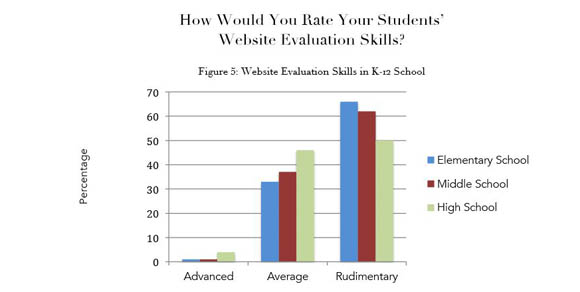
In a follow up to data collected in 2012, EasyBib completed a survey this year of 1,182 school and academic librarians, and 10,471 students, in order to determine how libraries are evaluating and responding to the need for information literacy instruction in schools and in higher education. The report shows there is a wide gap between K-12 schools and academic institutions in both perception of research ability and instruction offered.
Although school libraries are integral to building an early foundation for information literacy, the data indicates that many students are not receiving dedicated or sustained instruction on how to evaluate information across media platforms until they go to college. Though all higher education institutions had at least some information literacy training, 12% of K-12 schools reported having no research instruction whatsoever. If we look just at high school libraries, the number reporting that they have no instruction of research skills jumps up to over a quarter (26%) of that group.
On top of that, half of high school librarians surveyed responded that students’ understanding of website evaluation was merely “basic,” despite the fact that 60% of all librarian respondents said that students prefer Open Web resources and use them “very often.”
It’s easy to recognize that information literacy instruction is likely getting shortchanged at school libraries due to budget and time restraints. However, because all librarians know the importance of information literacy, and know that its value is likely to increase in the future, EasyBib suggests that many school librarians will need to get creative in their approaches to research instruction. Such strategies might include online video tutorials, creating better awareness of subscription databases, and fostering better channels of communication with teachers and administrators. A combination of these and other methods could make a big difference in ensuring the future success of today’s students.
Note: This post is part of our series, “The Weekly Number.” In this series, we highlight statistics that help tell the story of the 21st-century library.